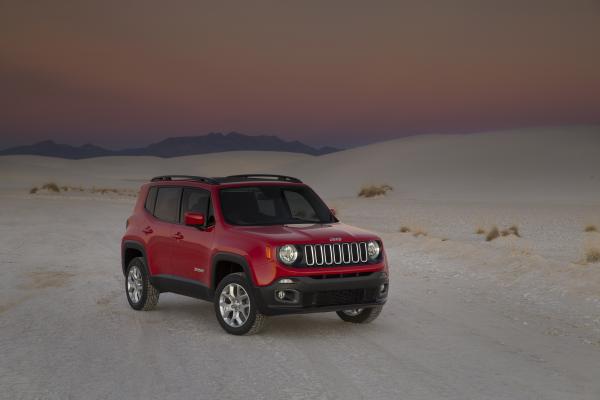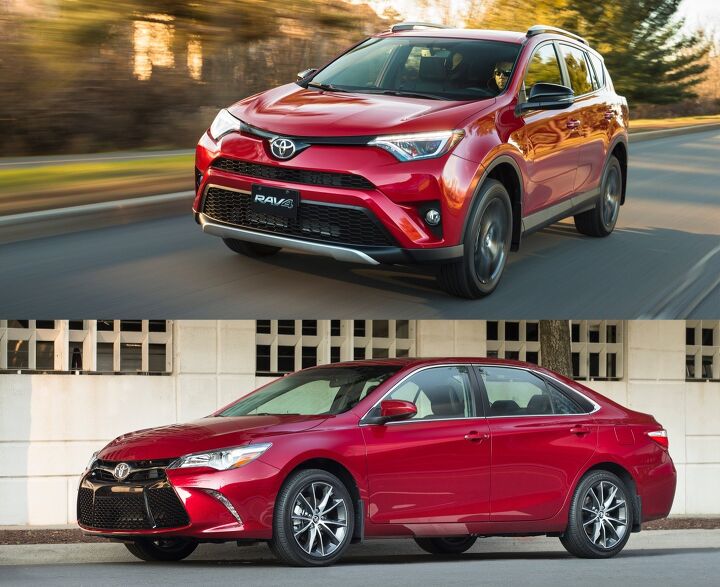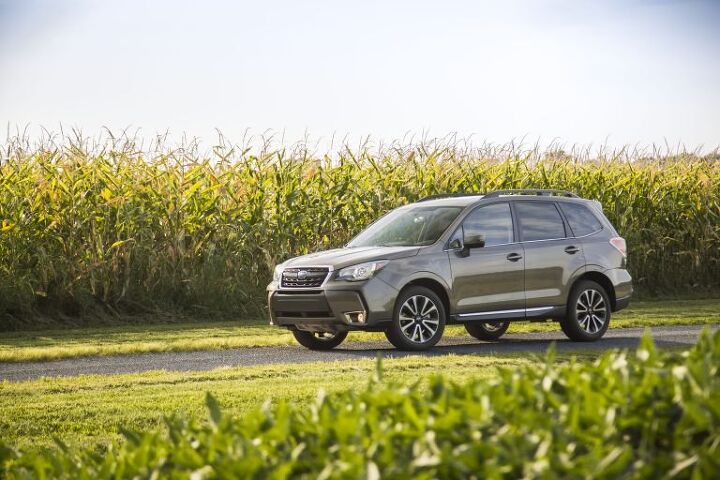#August2016Sales
TTAC Subcompact Crossover Equation: Can You Find Good Deal in a Fleet of Bad Deals?
There’s a problem with subcompacts. All sorts of subcompacts.
Subcompact hamburgers. Subcompact basketball players. Subcompact beds. And especially subcompact crossovers.
After years of examining subcompact cars before purchasing a compact, you know the drill. With a subcompact, you save a little bit of money, realize negligible benefits at the fuel pump, and suffer sharp reductions in useable space, not to mention typical losses of power and refinement.
The burgeoning subcompact crossover market is no different. Sure, the base price of a typical all-wheel-drive subcompact crossover is roughly 15-percent lower than the base price of its all-wheel-drive compact sibling, but a handful of subcompacts are just as thirsty as their big brethren and some see catastrophic reductions in cargo capacity.
As a result, and as a general rule, TTAC is no fan of the subcompact crossover genre.
The value simply isn’t there — and we have some math to prove it.
How Sports Are Your Cars? We Have Answers
Even Mazda, we told you last week, is now selling more crossovers than cars.
One-third of Chevrolet’s U.S. volume is produced by pickup trucks. An SUV now generates more than half of the Bentley brand’s U.S. sales. Half of all Chrysler buyers choose a minivan.
Where are the sports cars?
Even Mazda Is Now Selling More Crossovers Than Cars, But Overall Mazda Sales Are Still Down
Over the last two months, Mazda, that great tiny bastion of four-cylinder engines and SkyActiv and adding lightness, has sold more crossovers than cars in the United States.
Yes, that Mazda. The Mazda that had to rebadge Fords to bring its first two SUVs to market. The Mazda that, only four years ago, produced two-thirds of its U.S. sales with passenger cars.
Unfortunately, the gains now produced by Mazda’s CX crossover division aren’t enough to counteract the plunging sales of Mazda’s three remaining cars. As a result, Mazda’s U.S. market share is down to just 1.7 percent through 2016’s first eight months.
The good news for Mazda? Company bosses saw this coming. As part of a long-term strategy, Mazda is sticking to its guns, unwilling to overreact to disappointing short-term results with short-term fixes.
You Think The Ford F-Series Is Popular In Its 'Murican Homeland? You Ain't Seen Nothing Yet
It seems as though you can’t turn around on the streets of Atlanta or the suburbs of Austin or the outskirts of Albuquerque without seeing a Ford F-Series pickup truck.
For 34 years running, Americans have registered more copies of the F-Series than any other pickup truck. A wide-ranging model lineup (just like its competitors) and top-selling rivals that split their sales between brands means Ford consistently and overwhelmingly sells more full-size pickup trucks than any other automobile brand in the United States. At the current rate of growth, Ford will sell more than 800,000 F-Series pickups in 2016, more than at any point since 2005.
While it’s impressive that Ford owns 30 percent of the American pickup truck market, perhaps the more daunting figure shows that 1 out of every 22 new vehicles sold in the U.S. is a Ford pickup truck.
But don’t be so easily impressed. Look northward, where the Ford F-Series is far more popular than it is in the United States.
Full-Size Pickup Truck Sales Are Suddenly Falling In America
Are the economic successes of Wall Street not being passed down to Main Street? Are concerns over the future post-November direction of the country fostering caution in the minds of consumers? Did certainty regarding forthcoming autumn incentives postpone summer purchases?
And might the benefits of a burgeoning midsize pickup truck class finally be inhibiting demand for full-size pickup trucks?
Whatever the reason, U.S. sales of full-size pickups declined in the summer of 2016 after growing much faster than the overall market coming out of the recession.
In fact, in August 2016, all six nameplates in the category produced fewer sales than they did one year earlier. During the same period, sales of midsize pickup trucks jumped 39 percent.
XT5 is Proof Cadillac's Broken Product-Planning Clock is Right At Least Twice a Decade
In 1999, GM altered the front fascia and slightly upgraded the interior of the GMC Yukon Denali to introduce the Cadillac Escalade. Although Cadillac was late to the Lincoln Navigator’s game, the biggest, baddest, boldest Cadillac quickly became an undeniable hit.
Now in fourth-generation form, U.S. sales of the regular-wheelbase Cadillac Escalade are on track to rise to an eight-year high in 2016.
Joining the Escalade in Cadillac’s SUV/crossover lineup in 2003 was the first-generation Cadillac SRX. With a two-row mainstream approach in generation two, the Cadillac SRX also became a huge success. Propelled forward in part by incentives, the SRX’s ability to claim its best ever U.S. sales total in 2015, its final full year, was nevertheless impressive.
Less than half a year into its run, the SRX-replacing Cadillac XT5 is likewise a formidable hit; yet more proof that Cadillac knows how to shake its moneymakers. Which makes you wonder why Cadillac hasn’t already brought to market more moneymakers for the brand to shake.
U.S. Minivan Sales Will Rise To A Nine-Year High In 2016, FCA Market Share At 45 Percent
A long ways from the 1.1 million minivans sold in 2005, U.S. sales of sliding-door people carriers are on track to rise to a nine-year high of more than 600,000 units in calendar year 2016.
Through the first eight months of 2016, year-over-year minivan volume is up 19 percent in the United States, though an industry-wide slowdown stalled the minivan sector’s expansion in August.
More than a year after a plant shutdown in Windsor, Ontario, enabled retooling for a new generation of Chrysler MPV product — and severely cut into fleet sales — Fiat Chrysler Automobiles currently owns 45 percent of the American minivan market, up from 33 percent in the first eight months of 2015.
A portion of the credit for FCA’s resurgence belongs to the all-new Chrysler Pacifica, a direct Town & Country replacement that we’re testing this week. After forming only 25 percent of Chrysler brand sales at this stage of 2015, minivans are suddenly responsible for half of all volume at the fading Pentastar brand.
Chevrolet Camaro Sales Keep Falling, Ford Mustang And Dodge Challenger Sales Do, Too
In response to disappointing sales of the new-for-2016 Chevrolet Camaro, General Motors revealed last week that it will cut prices of the 2017 model.
Although there are plenty of 2017 Camaros already available — all of which will benefit from the newly lowered price — the issue facing GM’s U.S. dealers now pertains to the number of 2016 Camaros on dealer lots. Of the roughly 27,000 Chevrolet Camaros in stock at dealers across America, according to Cars.com, 40 percent are MY2016s, the appeal for which decreases rapidly as more MY2017s become available.
This ballooning Camaro inventory, a 139-day supply heading into September 2016, was caused by a sharp decrease in Camaro demand with the launch of the all-new sixth-generation model, a subject we’ve explored frequently in the past. Through the first eight months of 2016, U.S. sales of the Chevrolet Camaro are down 15 percent.
But sales of the Camaro’s chief rival, the wildly more popular Ford Mustang, are falling, as well. Dodge Challenger sales are sliding, too.
Ungainly Bentayga 'Cayennes' Bentley In Its First Month On The Market
Mercedes-Benz began selling the ML in 1997. Seemingly more of a stretch, along came the BMW X5 two years later.
Then Porsche, not just a luxury carmaker but the preeminent German sports car builder, pulled the same stunt with the Cayenne in 2003. The move doesn’t seem so crazy now that Porsche produces 60 percent of its U.S. sales by way of the Cayenne and its little brother, the Macan.
Indeed, there were no surprises when earlier this year, in one fell swoop, the F-Pace became Jaguar’s best-selling model in its first month on the market, outselling the newly re-launched XF and the brand new XE right from the start.
But can the same strategy be replicated further upmarket? Much further upmarket, at a $232,000 price point? At a brand which suffered a 46-percent year-over-year sales decline in 2016’s first seven months?
Most definitely. The Bentayga is to Bentley what the Cayenne became to Porsche, what the F-Pace has already become at Jaguar. Only more so.
Midsize Sedan Death Watch #3: August 2016 Midsize Sales Plunge 26%
There will always be a place in the American market for the conventional midsize sedan.
Despite harsh declines in recent months, consumers are still on track to register more than 2 million midsize cars in calendar year 2016. In fact, a handful of nameplates — Accord, Legacy, Malibu — are attracting more buyers this year than they did in the first two-thirds of 2015.
But U.S. sales of midsize cars are now falling with a special kind of speed, plunging 26 percent in August, a loss of nearly 58,000 sales over the span of just one month.
It Didn't Take Five Years: The Toyota RAV4 Outsold The Toyota Camry In August 2016
Will the Toyota RAV4 outsell Toyota’s long-running best-selling car, the Toyota Camry, within the next five years? Nine months ago, Toyota Motor Corp.’s U.S. boss, Bob Carter, said, “I’ll bet you lunch that will happen.”
It didn’t take five years.
To be fair, Carter wasn’t referring to a single month’s results. Indeed, through the first two-thirds of 2016, the Camry produced nearly 36,000 more U.S. sales — about one month’s worth — than the RAV4.
But in August 2016, for the first time in Toyota’s U.S. history, the Toyota RAV4 was more popular than the Toyota Camry. And the RAV4 was by no means the only vehicle to outsell the most popular car in America.
Subaru Reports Record U.S. Sales In August 2016 With Industry's Lowest Incentives As Other Automakers Tumble
Sales of new vehicles declined by nearly 4 percent in the United States in August 2016, a year-over-year drop which followed flatlining sales over the previous three months. Bucking the trend to no small degree in August was capacity-constrained Subaru, which earned 4 percent of the market by selling more than 60,000 new vehicles for the first time in the company’s history.
Making Subaru’s achievements even more impressive: according to TrueCar, discounts in Subaru showrooms in August were 78-percent below the industry average.
U.S. Auto Sales Brand-By-Brand Results: August 2016 YTD
Expectations from analysts suggested U.S. auto sales would decline by as much as 5 percent in August 2016, a year-over-year drop of more than 70,000 units.
In the end, it wasn’t quite that bad. But August 2016’s 4-percent drop translated to a decline of 55,000 sales for an industry that grew by more than 116,000 sales in the first-half of 2016, a decent rate of expansion given the record-setting pace from one year ago.
There were industry bright spots in August 2016. Subaru reported an all-time monthly record of more than 60,000 sales. This was the best August ever for the Jeep brand. American luxury — Cadillac and Lincoln — was on the rise. Volvo’s resurgence continues apace.




























Recent Comments